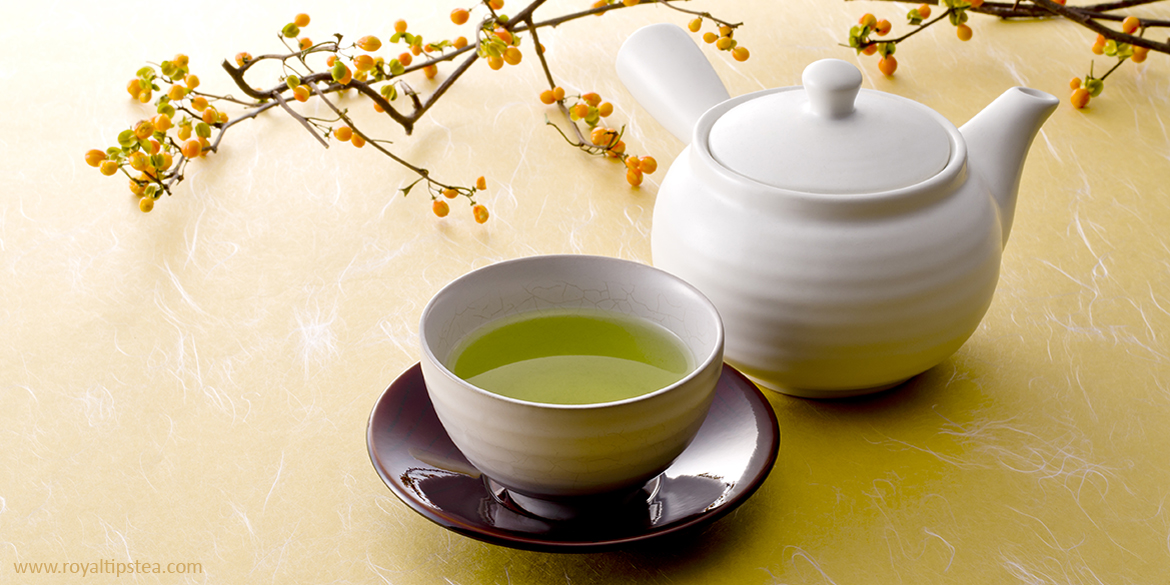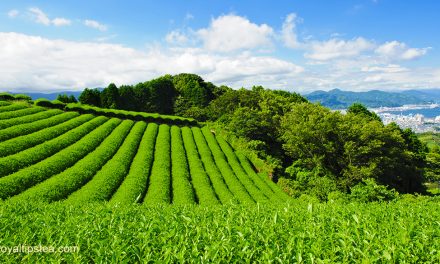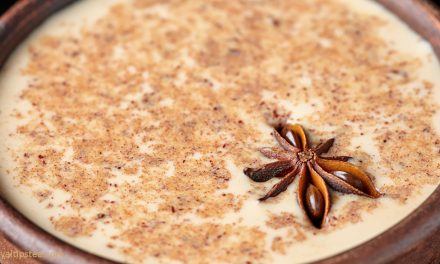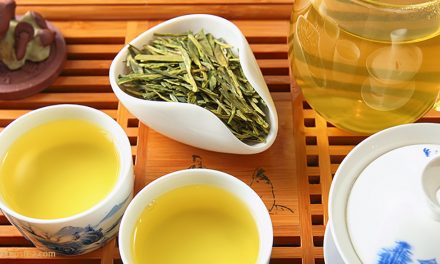All but the very highest quality Japanese teas, such as ‘gyokuro’ and ‘tencha’ (used to make ‘matcha’ for the Japanese Green Tea Ceremony), are manufactured by automated machines. As in all developed countries, the high cost of labour in Japan makes hand plucking and processing very expensive and the tea industry is consequently very heavily mechanized. Most harvesting is carried out using hedge-trimmer machines or huge tractors that slice off the new baby shoots from the bushes just as they reach the right size and height, and in the factories, most processing is automated.
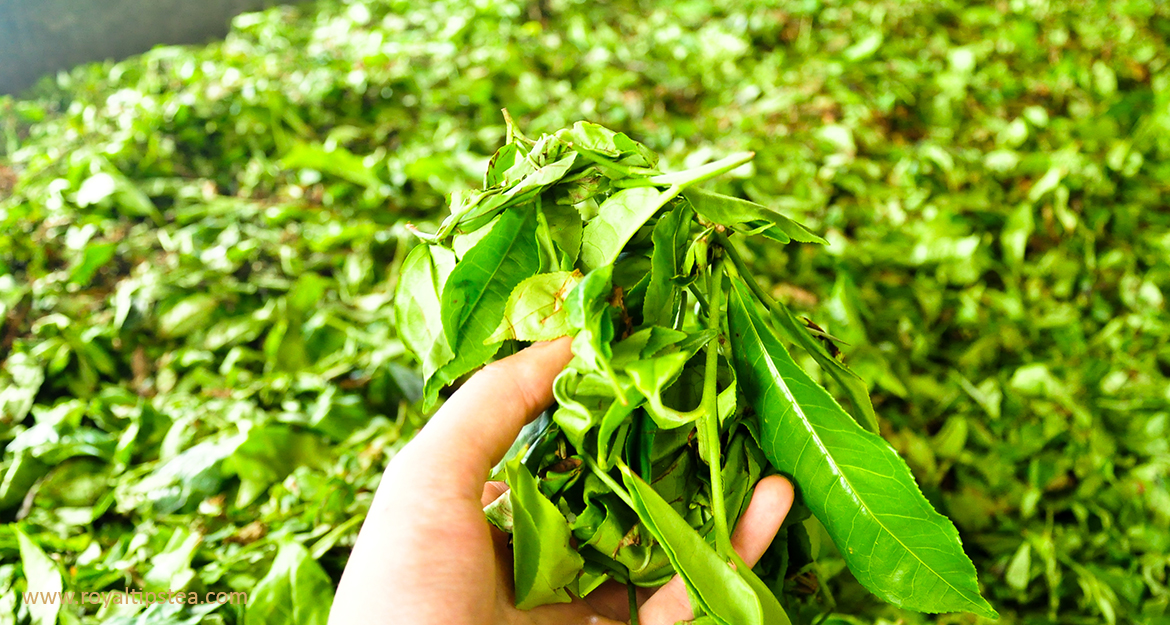
When the tea arrives at the factory door, it is first stored in cool air for a few hours and then placed in machines that are controlled by computers to steam, roll, twist, press and dry the leaves. The dried tea that comes out at the end of the production line is a mass of different sized pieces of leaf, stalks, stems, leaf veins and small, broken and dusty particles.
This unsorted tea is called ‘aracha’ and most growers and producers do not refine this crude tea but sell it in bulk through auctions to wholesalers.
The wholesalers then store the tea in chilled conditions to keep it fresh and, when it is needed at different times through the year, they refine the tea, sorting the leaf particles from the stems and stalks to give different types of tea with different names.
Sencha and Kukicha, two green tea varieties from the same harvest
‘Sencha’, for example, consists of dried leaves that are refined from ‘aracha’ made from fresh leaf shoots picked in the spring. After plucking the tea is steamed to stop oxidation. Sometimes this steaming is light and quick, for 30 to 45-seconds (called ‘asamushi’ or ‘futsumushi’), and sometimes the tea is more deeply steamed for a longer period of 1 to 2 minutes (called ‘fukamushi’). Deeper steaming gives the leaves a darker green colour and a more intense flavor.
The stalks that are separated from the leaves that make ‘sencha’ become ‘kukicha’ – ‘kuki’ means twig or stalk. Kukicha is sometimes also called ‘bocha’ (stick tea).
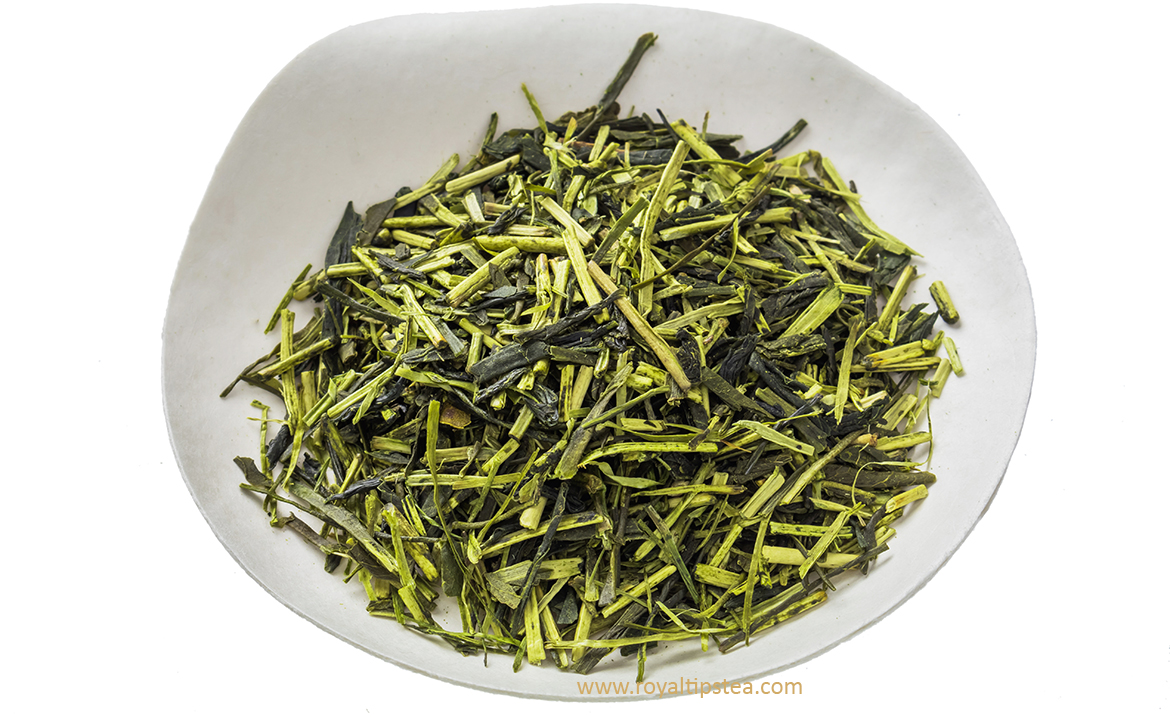
The difference between Kukicha and Karigane
The higher grade tea called ‘gyokuro’ is also made from tea shoots picked in the spring, but the difference between ‘sencha’ and ‘gyokuro’ is that the bushes used to make gyokuro are shaded for 21 days before the tea is plucked by hand.
A wooden frame is erected around and over the bushes and this then supports a special fabric that covers the bushes and cuts out 90% of the sunlight (in the past, rice straw was used instead of fabric). This shading increases the level of chlorophyll in the leaves so that they become a much darker blue-green in colour; it is also thought that more caffeine is produced in the buds and younger leaves; and fewer of the sweet L-theanine amino acids in the leaves are converted to bitter polyophenols – because of the lack of sunlight- so the tea is much sweeter and more umami in taste.
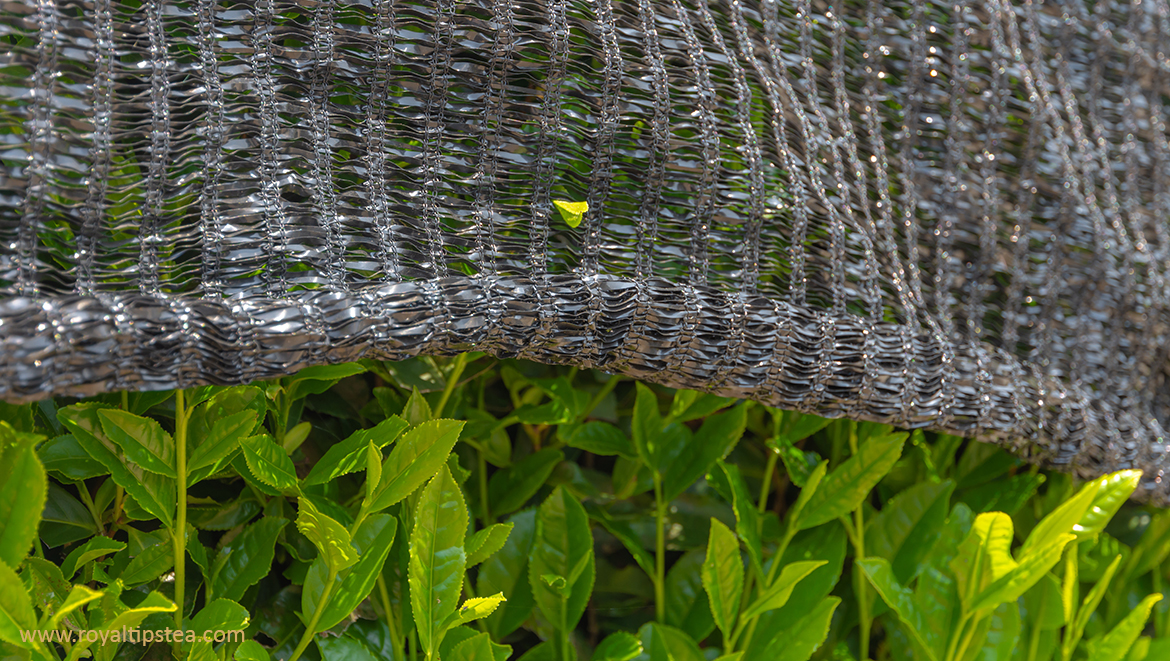
After the ‘gyokuro’ leaves have been sorted from the stalks and stems, the stalk tea is called ‘karigane’ and this is usually sweeter than ‘kukicha’ because the bushes have been shaded. ‘Karigane’ means “wild goose” and the name is from the fact that the dry stalks of tea look like the logs in the sea that migrating geese sometimes settle on to rest. Some ‘sencha’ teas are also shaded before they are picked (and are called ‘sencha kabusecha’) and both the tea and the stalks of these teas taste sweeter and more umami that unshaded teas.
Japanese teas are somewhat different from teas grown in other parts of the world. In China, different villages and provinces specialize in particular types of tea; in India, the teas from different regions have very distinct characteristics; but in Japan, producers in all the growing regions of the country make the same sorts of tea. So we can buy ‘sencha’, ‘kukicha’, ‘gyokuro’ or ‘karigane’ teas that have been made in many different parts of the country. The teas we buy usually a blend of teas made by a number of different farmers in different regions and mixed by the wholesalers who sell the teas to the retailer.

